BLACK PAGODA LIPSTICK PLANT

Aeschynanthus longicaulis, the scientific name for the Black Pagoda lipstick plant, has captured the hearts of plant lovers with its breathtaking leaf. Its rich green leaves with their alluring purple underside and creamy white mottling provide an eye-candy display. But beyond its alluring shape is another alluring feature: its illusive blossom.
Although the Black Pagoda lipstick plant is most commonly recognized for its mesmerizing leaves, it can also produce flowers. But unlike its colorful relatives in the lipstick plant family, the Black Pagoda’s blossoms have a certain beauty that is veiled in mystery. This page explores the characteristics, habits of blooming, and methods for provoking the Black Pagoda lipstick plant flower to bloom.
A Flower Unlike Any Other: Revealing Its Special Qualities
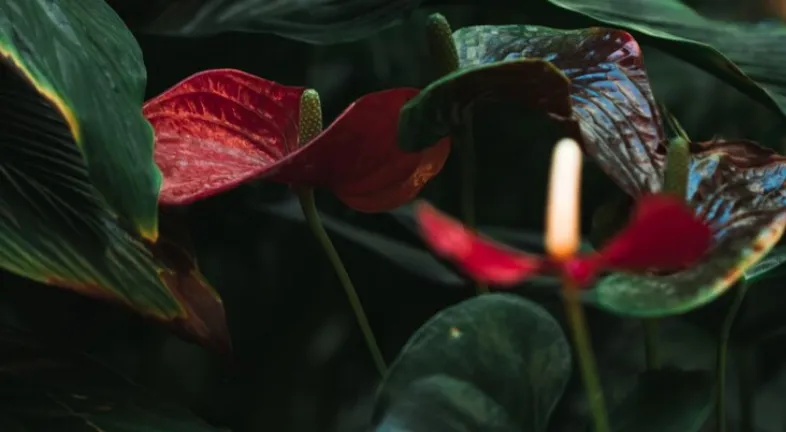
The Black Pagoda’s blossom has a more muted color scheme than other lipstick plants’ vivid red, orange, or pink blooms. Its flowers usually have traces of orange and brown and range in color from a vivid yellow to a greenish-yellow. The flowers are about 2 inches (5 cm) long and 1 inch (2 cm) in diameter, and they appear in clusters at the tops of the branches. These clusters make a lovely contrast by bringing some color to the flowing foliage.
The trumpet-shaped structure of the Black Pagoda flower is what sets it apart from the others. The entire genus was given the name”lipstick plant” because of its elongated shape, which is similar to a lipstick tube. In contrast, the Black Pagoda “lipstick” shape is less pronounced compared to other lipstick plant varieties.
The flower’s neck is a striking contrast to the rest of its appearance; it is typically a rich brown or burgundy color. This adds to its distinctive beauty by making a striking contrast with the petals’ lighter hues.
Blossoming Secrets: Exposing the Elements Affecting the Production of Flowers
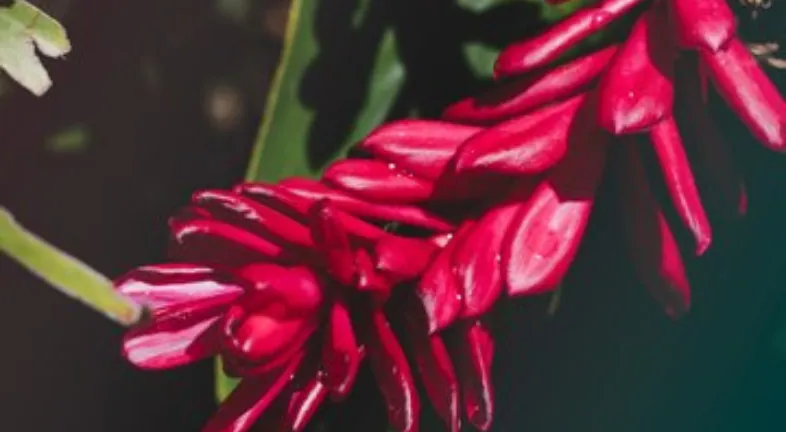
Although it can bloom all year round, the Black Pagoda lipstick plant usually produces its largest flowers in late winter and early spring, from February to May. But bringing this mysterious bloom to life necessitates a careful balancing act between a number of vital elements:
Light: Bright, indirect sunshine is ideal for the Black Pagoda’s growth. Steer clear of direct sunlight as it might burn the leaves and prevent them from blossoming. Windows with an eastward orientation are the best for getting the light you need without being too exposed.
Temperature: The best range for this tropical plant’s growth is between 65°F and 80°F (18°C and 27°C). Keep it away from abrupt temperature changes and cold drafts, as they could stress the plant and prevent it from flowering.
Humidity: The Black Pagoda prefers moderate to high humidity levels (between 50 and 70 percent), as it is native to tropical climates. An perfect climate can be created by spraying the leaves on a regular basis, setting the plant on a pebble tray filled with water, or using a humidifier.
Watering: It’s important to keep up adequate watering. While underwatering might stress the plant and reduce its ability to produce flowers, overwatering can cause root rot. Before giving the land a good irrigation, let the top inch of soil dry up. Do not use cold water on plants since this can shock them.
Fertilization: To supply vital nutrients for wholesome growth and flower development, use a balanced fertilizer diluted to half strength during the growing season (spring and summer).
Maturity: Exercise patience. The Black Pagoda lipstick plant typically needs four to five years to reach maximum flowering capability.
Above and Above: Extra Guidance for a Blooming Black Pagoda
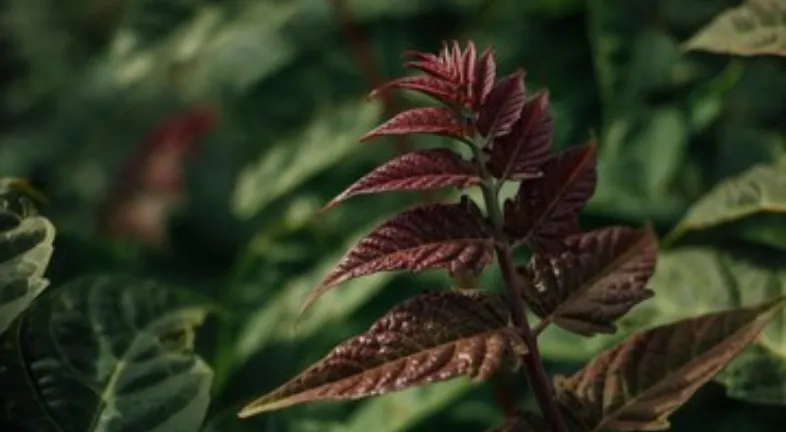
As desirable as the Black Pagoda’s elusive bloom is, its striking foliage is still its major draw. Here are some more pointers to make sure your lipstick plant, Black Pagoda, grows well:
Well-draining soil: To avoid waterlogging, use a well-draining potting mix made especially for epiphytes, like orchid mix.
When repotting or potting, pick a pot whose drainage holes are only a little bit bigger than the root ball. Repot every two to three years, only switching to a bigger pot when the roots crowd out of the existing one.
Pruning: To foster bushier growth and increase bloom production, gently trim lanky stems.
If you take the time to care for your Black Pagoda lipstick plant as recommended by these instructions, you should be able to enjoy not only its gorgeous foliage but also the captivating display of its rare and unusual bloom. Remember that the keys to realizing this fascinating plant’s full potential are patience, the appropriate conditions, and a gentle touch.
The Black Pagoda has a more understated elegance than other lipstick plant types, which have bright red, orange, or yellow blossoms. Usually appearing in clusters at the tips of the branches, its blooms are green and yellow in color. The tubular-shaped flowers have a protruding pistil that gives them a unique touch. They are around 1-2 inches long.
CONCLUSION:
For those who enjoy gardening, the Black Pagoda lipstick plant is a wonderful experience. Even though the flowers aren’t as colorful as those of other lipstick plant species, the plant’s overall aesthetic appeal is enhanced by its understated beauty. You can appreciate this fascinating houseplant’s full splendor by learning about its blooming behaviors and performing particular actions to promote blossom production. Recall that the Black Pagoda’s worth goes beyond its blossoms; given the right care, its distinctive foliage may be captivating as well as thriving.



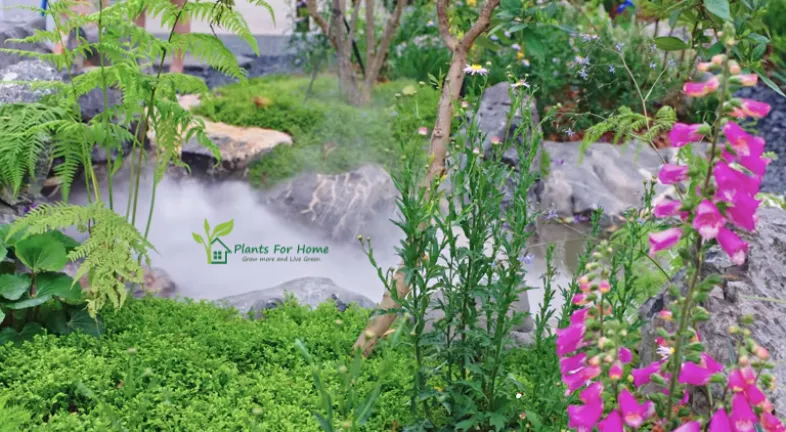







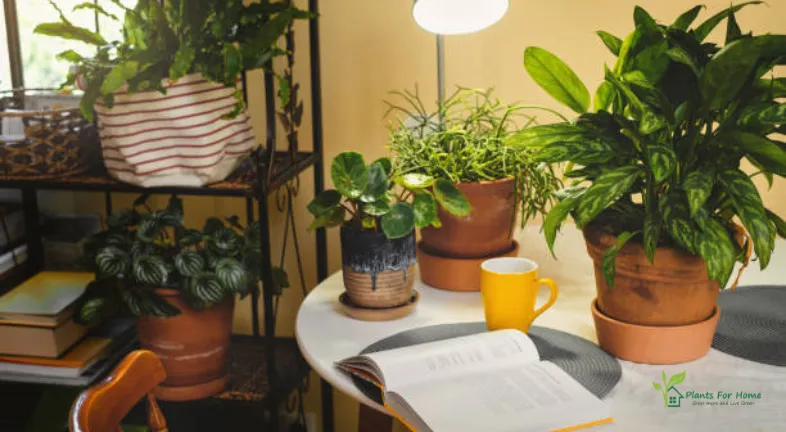
1 thought on “BLACK PAGODA LIPSTICK PLANT”
Pingback: Black pagoda lipstick plant | Article Cede